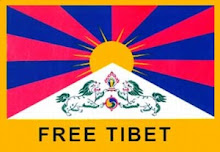

«Dopo il mercato centrale di Kasavubu, Matongé è il cuore pulsante di Kinshasa, città di 4 milioni di abitanti [nel 1978] suddivisi in 400 etnie, capitale di un paese grande quattro volte l’Italia che ha conosciuto grandi sconvolgimenti sociali e una lunga dittatura. […] Matongé è la valvola che lascia sfiatare il vapore, una zona d’ironia libera per non impazzire. La musica zairese contemporanea è nata a Matongé, tra concessioni labirintiche e palazzoni di cemento. Una Corte dei Miracoli dove si trova di tutto per pochi soldi. […] La musica impazza dalle
ngandas, taverne locali, e dagli altoparlanti dei negozietti straripanti di cassette pirata. Ma soprattutto, a partire da un’ora scandalosamente tarda, i club si trasformano in fornaci che sera dopo sera consumano i nuovi successi facendoli entrare nella leggenda. […]
In questo universo dadaista, violento e passionale, intrallazzone e generoso […] durar è un’impresa eroica. Sicché Luambo Makiadi Lokanga La Dju Penè François, alias “Franco”, fa parte dei miti. esordisce negli anni ’50 sulle orme del chitarrista zairese Tino Barosa, mago dello stile patengué, un compromesso tra pachanga (post cha-cha-cha) e merengue (salsa dominicana), poi firma una rumba dal ritmo rapido, la famosa rumba odemba, arricchita di elementi folkloristici e pompata da una tecnica di chitarra che ricama su due note intorno a un tema che prima veniva dato dalla kalimba tradizionale, una sanza locale. Per affrontare l’impresa, Franco si serve di un pezzo da novanta, l’OK Jazz […] un ensemble con cui questo figlio del Basso Congo immagina una combinazione di ritmi locali e influenze cubane su uno sfondo di loquacità popolare che partorirà decenni di grandi successi. […]
Nel 1965 una “rogna” politico-finanziaria manda al tappeto la giovanissima orchestra; Franco salva gli strumenti dagli artigli dei creditori e fa rinascere il complesso con il nome di TPOK Jazz, da “Tout-Puissant OK Jazz” (“Onnipotente OK Jazz”), un modo per affermare un’ambizione smodata. Questa rinascita segna l’inizio di un’incredibile competizione con altre formazioni, in particolare quella dell’Africa Fiesta National guidata dall’estroso Tabu-Ley Rocherau, erede stilistico del grande Kabaselé. […]
Tuttavia, la longevità del successo di Franco è dovuta al suo talento di cronista della vita sociale e alla sua verve satirica […] molte sue canzoni testimoniano una propensione alla morale che seduce il pubblico popolare. […] Franco […] è di fibra plebea. Attraverso i suoi avi tetela, ngombé e ngoma incarna una percezione meticciata del mondo congolese. Un vissuto che gli permette di cantare fuori dai denti il rigore di una società travagliata dalla cupidigia dei potenti, dalla crisi economica, dall’onnipresente bustarella […] una società di cui si perdono i valori. […]» (Frank Tenaille, Lo swing del camaleonte, Epoché, pp. 69-73)
 «Of all the fabled dance bands in Africa, OK Jazz stand out for the quality of music, the quantity of output and their pan-African influence. The band was pre-eminent in African music for more than 30 years, linking the first generation of Congo rumba with the later exuberance of Zairean soukous.
«Of all the fabled dance bands in Africa, OK Jazz stand out for the quality of music, the quantity of output and their pan-African influence. The band was pre-eminent in African music for more than 30 years, linking the first generation of Congo rumba with the later exuberance of Zairean soukous.
This great musical institution [which was to become known as 'l'academie de la musique congolaise moderne'], was founded on June 6, 1956 when Franco, 'De la Lune' Daniel Lubelo (rh.gtr), Jean Serge Essous (sax), Bosuma Dessouin (conga), Pandi Saturnin (perc), Landot Philipe 'Rossignol' (vcl) Roitelet Munganya (bass) and some friends played their first dance under the name of OK Jazz in Kinshasa (Leopoldville).
The musicians were all session players at Loningisa studios where they had been tutored and directed by the guitarist Henri Bowane. As well as playing in the house band, Bana Loningisa (Loningisa Boys), most had released 78rpm records and had already scored several hits before they started as a gigging band. When they recorded these tracks later in 1956, the singers Vicky Longomba and Edo Nganga had joined. The following year, Antoine Armando Brazzo added his guitar accompaniment.
Franco had joined Loningisa in 1953 at the age of 15, initially playing with Dewayon and the Watam band. “At the time I was skinny, just a kid who played guitar which we called Libaku ya nguma (a hollow-bodied electrified guitar known as a 'lucky break') and the guitar was bigger than me.” He made such an impression that he was signed to a 10-year contract. Franco became Congo's first true pop star, sponsored to model clothes, endorsing products and enjoying a huge fan club. Musicians contracted to the record label were not supposed to work outside studio time, but in 1956 the Loningisa boys formally organised themselves into a working band, sponsored by Oscar Kashama, owner of the OK Bar. They still recorded under the names of individual members, while accompanists were also credited, sometimes as 'ensemble OK Jazz'.
Track 1, En Entre OK, On Sort KO, was a theme song and slogan for the band in which all the members are introduced. Considering its content, this can be counted as the debut release of Africa's greatest orchestra. Subsequent releases came regularly every few weeks, although the band's personnel shifted frequently. A major reshuffle occurred in 1957 but, throughout many upheavals and power struggles, Franco became established as the accepted leader. Loningisa closed down before Congo's independence in 1960, but OK Jazz evolved into a massive organisation and Franco' s personal reputation was never equalled. Throughout the 1960s, 70s and 80s, OK Jazz was the yardstick for African dance music. And this is where it all started.» (Retroafric, read more)
Link in comments
 «While there are a few handfuls of albums of Mongolian music, and older targeted albums for particular nations, this is more of a rarity: an album covering the music of Central Asia as defined essentially by the 'Stans' of the former Soviet Union: Kazakhstan, Kyrgyzstan, Uzbekistan, Turkmenistan, Tajikstan. The music on Rough Guide to the Music of Central Asia ranges from the classical traditions of the region, as hailing from Samarkand and Tashkent, to modern hard rock, as well as all points on the spectrum between the extremes. A number of the performers herein are fusionists and revisionists, combining traditional folk musics with contemporary sounds. The album starts on such a note with a mix of classical Kazakh tunes pounded over by electric guitars. Pop singers from the last decade of cultural exchange are sprinkled throughout the album, as recorded locally and through international channels (some have some decent fame in Europe). Folk performers and classicists also take their share of playing time, with masters of the various Central Asian lutes prominent, such as Turgun Alimatov. The album carries a little of something for everyone, in theory, without as many of the particularly foreign sounds, or the more weathered voices and wails that are sometimes known to accompany the music of the region. It's a more accessible entry point to the region's music than many, and may provide a good reference for current listeners to find something new, as well.» (AMG)
«While there are a few handfuls of albums of Mongolian music, and older targeted albums for particular nations, this is more of a rarity: an album covering the music of Central Asia as defined essentially by the 'Stans' of the former Soviet Union: Kazakhstan, Kyrgyzstan, Uzbekistan, Turkmenistan, Tajikstan. The music on Rough Guide to the Music of Central Asia ranges from the classical traditions of the region, as hailing from Samarkand and Tashkent, to modern hard rock, as well as all points on the spectrum between the extremes. A number of the performers herein are fusionists and revisionists, combining traditional folk musics with contemporary sounds. The album starts on such a note with a mix of classical Kazakh tunes pounded over by electric guitars. Pop singers from the last decade of cultural exchange are sprinkled throughout the album, as recorded locally and through international channels (some have some decent fame in Europe). Folk performers and classicists also take their share of playing time, with masters of the various Central Asian lutes prominent, such as Turgun Alimatov. The album carries a little of something for everyone, in theory, without as many of the particularly foreign sounds, or the more weathered voices and wails that are sometimes known to accompany the music of the region. It's a more accessible entry point to the region's music than many, and may provide a good reference for current listeners to find something new, as well.» (AMG)















































